Special Feature: Products Sally Recommends
nature versus nuture: cacao beans and their flavor
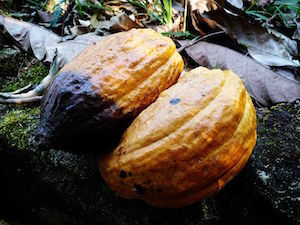 At some point when discussing chocolate, we've all heard about “fine flavor” versus “bulk” beans. Everyone knows that the sought-after Criollo beans have the best flavor, while the more prolific Forastero beans are the “bulk” beans. The Trinitario beans are hybrids of Criollos and Forasteros. If only it was really that simple.
At some point when discussing chocolate, we've all heard about “fine flavor” versus “bulk” beans. Everyone knows that the sought-after Criollo beans have the best flavor, while the more prolific Forastero beans are the “bulk” beans. The Trinitario beans are hybrids of Criollos and Forasteros. If only it was really that simple.
The writer John McPhee has stated that science erases what was previously true, and that was never more accurate than with cacao beans. The Criollo, Forastero, and Trinitario partitioning of cacao beans dates from the colonial eras of cacao-producing nations. Unfortunately for the idea of simple, neat classifications, if left to their own devices, cacao species interbreed frequently and to a degree calculated to confound manufacturers and scientists alike. With genome mapping and genetic testing, it turns out that there are not merely three species of cacao beans. How many are there? In her 2001 book The New Taste of Chocolate, Maricel Presilla divides Criollo, Trinitario, and Forastero beans into multiple subspecies. More recently, the authors of a 2008 article proposed “a new classification of cacao germplasm into 10 major clusters, or groups: Maranon, Curaray, Criollo, Iquitos, Nanay, Contamana, Amelonado, Purus, Nacional, and Guiana”, noting that these groupings “reflect more accurately the genetic diversity now available for breeders”. I have been told that, between 2008 and the present day, the authors of that article have added two more groups to their list. Seneca Klassen, of bean-to-bar maker Lonohana Hawaiian Estate Chocolate, says there are “at least eleven truly diverse strains of cacao”. Other sources assert there are “dozens” of varieties.
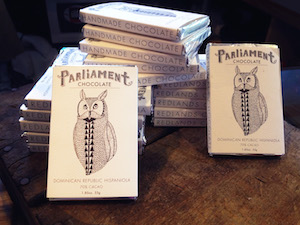 As a chocolate consumer, you don't have to keep track of all this information. But it is worth thinking about. Even supposing one can find “pure” Criollo beans, that highly-prized Criollo constitutes a minute fraction of the world's annual cacao bean harvest. Just because beans are labeled as “Criollo”, it doesn't mean they really are Criollo. One chocolate-maker I contacted suggests that some “Criollo” beans are really Trinitario beans that exhibit certain desirable traits traditionally associated with Criollos. Steve DeVries, a bean-to-bar chocolate maker and chocolate consultant who has done considerable legwork on plantations and in varietals, tells me that cacao varieties are very often identified incorrectly. Unless you're a geneticist (and most cacao farmers and chocolate manufacturers are not), discovering the true nature of a cacao tree may well be a hopeless undertaking. And genetic testing has its limits. For example, testing the genetics of the tree from which the beans came, or even the shells of the beans, will only give you the “mother” tree's genetic makeup. Further, just because a bean is labeled as Criollo, it doesn't mean that it will be a “fine flavor” source, just as a bean called a “Forastero” is not necessarily worthy only to be used in mass-market chocolate.
As a chocolate consumer, you don't have to keep track of all this information. But it is worth thinking about. Even supposing one can find “pure” Criollo beans, that highly-prized Criollo constitutes a minute fraction of the world's annual cacao bean harvest. Just because beans are labeled as “Criollo”, it doesn't mean they really are Criollo. One chocolate-maker I contacted suggests that some “Criollo” beans are really Trinitario beans that exhibit certain desirable traits traditionally associated with Criollos. Steve DeVries, a bean-to-bar chocolate maker and chocolate consultant who has done considerable legwork on plantations and in varietals, tells me that cacao varieties are very often identified incorrectly. Unless you're a geneticist (and most cacao farmers and chocolate manufacturers are not), discovering the true nature of a cacao tree may well be a hopeless undertaking. And genetic testing has its limits. For example, testing the genetics of the tree from which the beans came, or even the shells of the beans, will only give you the “mother” tree's genetic makeup. Further, just because a bean is labeled as Criollo, it doesn't mean that it will be a “fine flavor” source, just as a bean called a “Forastero” is not necessarily worthy only to be used in mass-market chocolate.
How do chocolate manufacturers deal with the complicated genetics? Many of the smaller bean-to-bar manufacturers do not have a good handle on cacao genetics. How could they? They're not geneticists themselves, and they don't have the money to employ people who understand genetics. In the shorter term, and for their purposes, that might not matter much. Regarding the larger manufacturers of chocolate, “Sebastian” (not his real name, but he's led research and development for top chocolate companies for a couple of decades) tells me that Mars Chocolate and the USDA have done a lot of work in trying to understand cacao genetics. All of the varieties have some positive characteristics, whether it's higher yield, greater resistance to a particular disease or pest, good flavor, or something else. Understanding genetics means that it's possible to more effectively breed cacao trees to produce those with a greater number of positive traits. There's no denying that genetics are important in the production of good chocolate; in the future, genetic research may become far more crucial, as far as protecting cacao trees against particular diseases/pests or allowing farmers to conserve resources while growing the trees. And if genetics can eventually make cacao farmers' lives a little easier, that might just be the nicest consequence of such research.
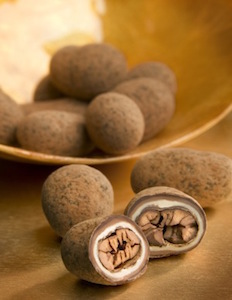 Being a cacao farmer is difficult, to say the least. Tom Pedersen, of Cocoa Puro Chocolates, declares that the vast majority of cacao is grown on small family farms of a few hectares (one hectare equals 2.47 acres). Cacao farmers are typically poor and not well educated. They have to plant trees that will give them a good return on their investment, bearing in mind that it usually takes at least three years for a cacao tree to bear its first crop, depending on the variety; that's a long time to wait for an investment to begin to pay off, particularly an investment that requires as much care as cacao. As a consequence, cacao farmers may plant varieties that are hardier and more disease/pest resistant at the expense of flavor. Worse still, a farmer's profits from his cacao beans can be cut into by middlemen, who often gather beans from multiple farmers, then ferment them, dry them, and sell them to larger buyers. The idea behind Fairtrade (TM) relationships with farmers' cooperatives and direct trade relationships with individual farmers is more money for the farmers themselves, although that's not always what actually occurs. Steve DeVries notes that “cacao cooperatives are often top-heavy organizations that result in the farmer receiving less, not more than the world price”. Where the farmers do receive more money, it can mean improved standards of living and better education for them and their families. In return, those in direct trade relationships with farmers can have some say in what the farmers plant, how the cacao trees are tended, how the beans are fermented, and the like.
Being a cacao farmer is difficult, to say the least. Tom Pedersen, of Cocoa Puro Chocolates, declares that the vast majority of cacao is grown on small family farms of a few hectares (one hectare equals 2.47 acres). Cacao farmers are typically poor and not well educated. They have to plant trees that will give them a good return on their investment, bearing in mind that it usually takes at least three years for a cacao tree to bear its first crop, depending on the variety; that's a long time to wait for an investment to begin to pay off, particularly an investment that requires as much care as cacao. As a consequence, cacao farmers may plant varieties that are hardier and more disease/pest resistant at the expense of flavor. Worse still, a farmer's profits from his cacao beans can be cut into by middlemen, who often gather beans from multiple farmers, then ferment them, dry them, and sell them to larger buyers. The idea behind Fairtrade (TM) relationships with farmers' cooperatives and direct trade relationships with individual farmers is more money for the farmers themselves, although that's not always what actually occurs. Steve DeVries notes that “cacao cooperatives are often top-heavy organizations that result in the farmer receiving less, not more than the world price”. Where the farmers do receive more money, it can mean improved standards of living and better education for them and their families. In return, those in direct trade relationships with farmers can have some say in what the farmers plant, how the cacao trees are tended, how the beans are fermented, and the like.
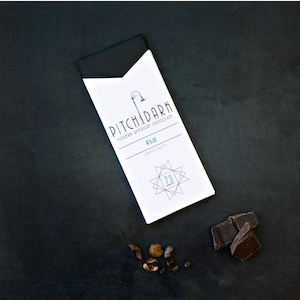 But genetics and varietals, it turns out, are only part of cacao flavor. There are other factors that figure prominently into this, factors often overlooked by people outside (and sometimes inside!) the industry. Cacao beans, as an agricultural product, will vary tremendously from one micro-climate, geographic region, and season to another, even beans of the same variety. And what might well have as much impact on chocolate flavor as genetics is post-harvest treatment, which encompasses a wide variety of processes. Brian Flick, of Pitch Dark Chocolate, describes a number of these processes. Are plantation workers able to slice through the rind of the cacao pod, which is very tough in some varieties, without damaging the delicate beans inside? Does fermentation begin within eight hours after the pods are opened? Is the wet mass of beans and pulp properly rotated during fermentation? Are the beans dried efficiently and evenly to prevent bacterial growth? Steve DeVries adds more concerns about fermentation. For how long are the beans fermented? Some beans might require only two or three days for sufficient fermentation, while others might need twice that long; excessive fermentation can produce an ammonia aroma and even lactic acid, and once those are present in chocolate, it is all but impossible to rid the chocolate of them.
But genetics and varietals, it turns out, are only part of cacao flavor. There are other factors that figure prominently into this, factors often overlooked by people outside (and sometimes inside!) the industry. Cacao beans, as an agricultural product, will vary tremendously from one micro-climate, geographic region, and season to another, even beans of the same variety. And what might well have as much impact on chocolate flavor as genetics is post-harvest treatment, which encompasses a wide variety of processes. Brian Flick, of Pitch Dark Chocolate, describes a number of these processes. Are plantation workers able to slice through the rind of the cacao pod, which is very tough in some varieties, without damaging the delicate beans inside? Does fermentation begin within eight hours after the pods are opened? Is the wet mass of beans and pulp properly rotated during fermentation? Are the beans dried efficiently and evenly to prevent bacterial growth? Steve DeVries adds more concerns about fermentation. For how long are the beans fermented? Some beans might require only two or three days for sufficient fermentation, while others might need twice that long; excessive fermentation can produce an ammonia aroma and even lactic acid, and once those are present in chocolate, it is all but impossible to rid the chocolate of them.
Other appropriate questions include how the beans are stored and transported; how long they're roasted, at what temperature, and to what degree; and whether the resulting chocolate is conched and, if so, by what means and for how long? And none of this takes into account the quality of the other ingredients used; that quality, too, will show in the finished product. Those of us who don't make chocolate from its component raw materials forget how complex an undertaking chocolate manufacturing is and how many variables can affect the finished chocolate.
So what's a chocolate consumer to do? The short answer is, don't taste solely with your eyes and ears. Don't get hung up on bean names or pedigrees. A manufacturer might claim that their chocolate is made with a “pure” strain of cacao bean, or produced from “rare” beans, or beans in one area of the world noted for beans of fine flavor. That's great, but it doesn't mean the chocolate will be to your liking. Don't focus on cacao percentage or price, either. A higher cacao percentage indicates a darker chocolate, but it's no indication of the quality of a chocolate or how much you will or won't enjoy it. And the price for a bean-to-bar chocolate product made by a small-scale manufacturer, a manufacturer who goes through the exhausting, labor-intensive process of research and gathering equipment and sourcing beans before even being able to produce what will necessarily be a tiny percentage of the output of a large-scale manufacturer, will naturally be higher. I like to support the Davids of the chocolate world, though sometimes I buy chocolate from the Goliaths, too. Just remember that a higher price on a chocolate bar is not a predictor of how much you'll like the chocolate.
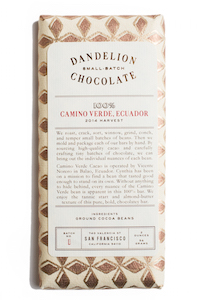 Before they can produce chocolate, chocolate manufacturers must define what they want in their finished product. Greg D'alesandre of Dandelion Chocolate explains that Dandelion tends to “focus on trying to get strong and interesting flavors...for us, heavier criollo tends to be sort of bland and mellow...All of the flavors we get excited about (fruity, floral, smoky) are often considered taint because for a very long time what people wanted was just chocolatey flavor”. An industrial-scale chocolate producer, by contrast, might opt for consistency over those “strong and interesting flavors”. Steve DeVries says that large-scale manufacturers often combine multiple types of beans and “roast them hard” to get rid of everything except the base chocolatey note; these manufacturers then add vanilla to their chocolate to provide fine high notes of flavor.
Before they can produce chocolate, chocolate manufacturers must define what they want in their finished product. Greg D'alesandre of Dandelion Chocolate explains that Dandelion tends to “focus on trying to get strong and interesting flavors...for us, heavier criollo tends to be sort of bland and mellow...All of the flavors we get excited about (fruity, floral, smoky) are often considered taint because for a very long time what people wanted was just chocolatey flavor”. An industrial-scale chocolate producer, by contrast, might opt for consistency over those “strong and interesting flavors”. Steve DeVries says that large-scale manufacturers often combine multiple types of beans and “roast them hard” to get rid of everything except the base chocolatey note; these manufacturers then add vanilla to their chocolate to provide fine high notes of flavor.
Which approach do you prefer? There's no right or wrong answer, but the only way to really know is to taste the chocolates in question. It's easy to be dazzled by celebrity endorsements, pretty labels, claims of purity or rareness of strain, and limited editions. But in the long run, all that matters is what you prefer and what chocolate works best for you. I expect to see many more bean-to-bar manufacturers (large and small) emerge over the next few years. I look forward to trying their chocolate, and I hope you'll do so, too.
Sources:
---Tom Pedersen, Cocoa Puro Chocolates, www.cocoapuro.com
---”Sebastian”, Research and Development
---The New Taste of Chocolate: A cultural and Natural History of Cacao with Recipes by Maricel E. Presilla (Ten Speed Press, Berkeley, CA, 2001)
---”Geographic and Genetic Population Differentiation of the Amazonian Chocolate Tree (Theobroma cacao L)”, by Motamayor et al. https://www.ncbi.nlm.nih.gov/pmc/articles/PMC2551746
---Seneca Klassen, Lonohana Hawaiian Estate Chocolate, www.lonohana.com
---Brian Flick, Pitch Dark Chocolate, www.pitchdarkchocolate.com
---Greg D'alesandre, Dandelion Chocolate, www.dandelionchocolate.com
---Steven DeVries, DeVries Chocolate, www.devrieschocolate.com
---Ryan, Parliament Chocolate, www.parliamentchocolate.com
![]()
Stephanie (HandOverTheChocolate@comcast.net) has had a strong affinity for chocolate from a very early age. Family members claim that, as a child, she was able to hear chocolate being opened in the kitchen no matter where she was in the house. Stephanie was baking by the time she was 6 and ran a short-lived baking business out of her parents’ kitchen when she was in high school. She has a Master’s Degree in Foods from Virginia Tech but no formal training in cooking or baking. Consequently, she is a home cook, not a chef. Prior to beginning this column, she had written about chocolate for some 8 years.
Note: This information was accurate when it was published. Please be sure to confirm all rates and details directly with the businesses in question before making your plans.



